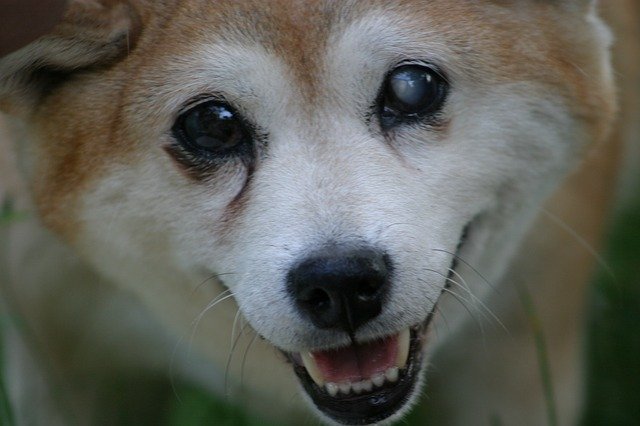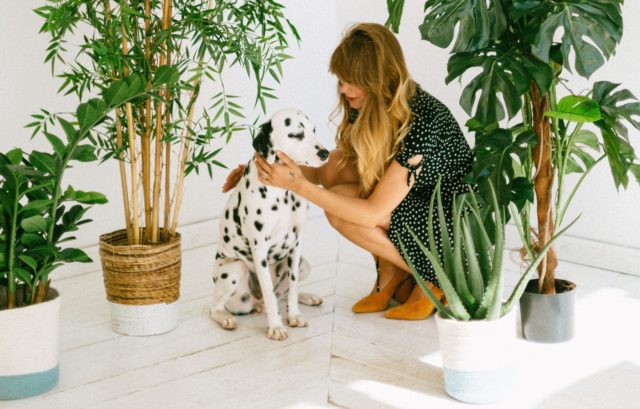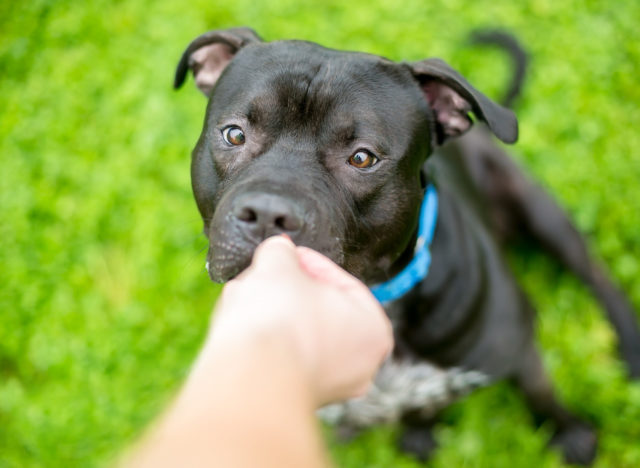
If you are considering adopting a blind dog or you have a pooch that is losing their vision, you may be wondering what you can do to make their life easier. In addition to preparing a safe home environment, there are also training techniques and specialized products you can use to help them feel confident and secure.
While a loss of vision would be devastating to us, our dogs tend to take it stride. They already rely heavily on sound and smell to navigate their world. With love and consistency, you can help them navigate this transition as well.
“It’s more traumatic to us as an owner and as a pet parent than it is to the animal,” says Dr. Tammy Miller Michau, a board-certified ophthalmologist with BluePearl Veterinary Partners. “They care about things such as, are they with you? Are they being fed? Are they in a safe, warm environment? If they are, they can live very happy lives, even with a loss of vision.”

Preparing the House
There are several things you can do to help your dog adjust to their vision loss and get around the house without injury:
- Keep a consistent routine your dog can depend on
- Do not rearrange the furniture or place items in your dog’s normal walking paths
- Do not move water or food dishes. If you do, lead your dog to the new spot until they get used to the change
- Dog-proof hazardous areas with baby gates, bumpers, and corner protectors
- Put a textured mat in front of any steps so your dog can start to associate the feeling with an upcoming step
- Make sure you have dangerous areas like fireplaces, ovens, porches, stair landings, etc., blocked off
- Create a safe zone with soft pillows and bedding your dog can retreat to when overwhelmed
- Mark toys with a strong-scented treat or dog-safe essential oil so your dog can find them by scent during play

Training Techniques
If you have a blind or visually impaired dog, it is important to teach them verbal cues such as Stay, Stop, and Get Back. Since they cannot see, you are going to have to use more capturing (waiting for a dog to offer a behavior and then reward) than other methods of training. Be sure to give plenty of verbal praise and physical touch for rewards, and of course, treats!
For a blind dog, the following cues are important for their safety, since they cannot always see dangers coming:
- Stay
- Stop – an emergency “freeze” cue that tells them to stop in their tracks
- Get Back – 180 degree turn and then travel in that direction
- Step Up/Step Down – you can teach your dog a verbal word that lets them know a ledge is in front of them. Useful if you plan on going on a lot of walks in cities with curbs or you have stairs in your house

Products for Visually Impaired Dogs
- Halo Vest – this ingenious vest has a plastic tubing-wrapped wire that sticks around the front of the dog, acting as a bumper if the dog runs into anything.
- Bumpers – cover any sharp edges on anything your dog may be able to run into with something soft, like this expandable table bumper.
- Living with Blind Dogs – this book has a lot of great information for owners who have blind or visually impaired dogs.
- “I’m Blind” ID Tag – it’s smart to have a tag on your dog that lets people know she can’t see in case she wonders off.
- Pet Doorbell Mat – made to teach your dog to let you know when it needs to go outside, you can use it keep your blind dog out of rooms that are dangerous. These mats make a simple noise like a doorbell when stepped on. Through simple training, you teach your dog to turn back when they hear the noise. It is NOT a correction nor loud enough to harm hearing, but a cue that lets your dog to know to “turn back.” It only works if you have trained your dog, but it’s effective and the nice thing is you can take the mat with you if you go someplace that has a dangerous area.
The post How To Help Your Blind Or Visually Impaired Dog Adjust appeared first on iHeartDogs.com.
from iHeartDogs.com https://ift.tt/2vVhNBY https://ift.tt/2VdjZzE

No comments:
Post a Comment